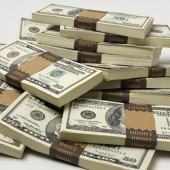Criminals interpreted the American prospect of “making money” quite literally in the past month, rallying authorities into attention and cashiers into caution as money counterfeiters struck all over the United States with counterfeit bills. The poison fruits of this federal felony – one that rouses the Secret Service into investigation – sprung in varying capacities and surprising locations.
Eight counterfeiters earned uttering altered U.S. currency counts for themselves this August in southern Minnesota. They also brought to light the ease of counterfeiting; a person only needs a decent printer, an oven cleaner, and small dollar bills – such as $1 and $5 bills. A similar brew of fake money hit Kerr County, TX, but that particular bleach-and-print counterfeiter still remains at large.
The phony money created with chemical washing can fool counterfeit detector pens since the fakes use the actual dollar material – the $1 and $5 bill papers. A cashier can look for the face-watermark on a bill to identify its validity; for example, if a $100 bill contains the hologram of Abraham Lincoln or George Washington, it is a fake.
On August 7th, Florida authorities caught Thomas Eldridge Addair, 40, in the act of counterfeiting money when a search of his home produced a jar of $1 and $5 bills in a chemical solution. He tried to fool his captors by insisting that the jar was a science project being conducted by his granddaughter. Meanwhile, Maryland police in Elkton found success in a case they started in mid-July, discovering their troublesome currency to have come out of a mere $49 printer.
While it may be easy to counterfeit money, spending the fake bills proved too difficult an accomplishment for many of the criminals. Philadelphia’s Fateen Stokes, 27, and Barry Stokes, 31, recently confessed their crimes, which involved purchasing clothes from a Lord & Taylor store with counterfeit money. In Austin, TX, Carlos Escobar, 24, and Anthony Gardner, 23, felt the chill of handcuffs after their scheme fell into the radar of authorities. The criminal team offered to purchase electronics – such as iPads – on Craigslist, met their victims off Interstate Highway 35, and used their phony bills to make the transactions.
Nothing is sacred for an Indiana counterfeiter still on the loose after he stepped into Evansville’s St. Benedict’s Cathedral, offered to make a $20 donation if the ushers could only give him change for his $100 bill, and traded his fake money for an authentic $80. While Evansville deals with its sinner, an Athens, GA police dispatcher fell from grace after unloading fake $100 bills onto a Kangaroo convenience store. A South American drug cartel might even be connected to the dispatcher’s counterfeiting operation, according to police.
Three bags of counterfeit currency recently appeared in, perhaps, the only appropriate location for such imitations: a Monroe, MI dumpster. A tenant discovered the fake money and alerted the police, who then conducted a raid on a basement apartment and arrested four people – one of the four people was a juvenile.
The constant trend of counterfeit money faltered under justice this past month, but it also managed to elude authorities from time to time. The Secret Service and the police fight in the counterfeiter’s war without always knowing how the war leans, but none-the-less, the fight remains essential to local businesses, banks, and people all over.


